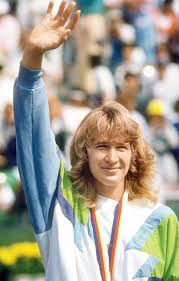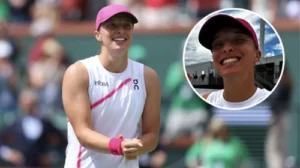It takes a special player and set of circumstances to win all four grand slams in a career. To do that and win Olympic gold in the same year requires someone and something transcendent.
By any measure, Steffi Graf’s 1988 Golden Slam has to be considered one of the greatest achievements in the open era of tennis. After 25 years, we can still collectively look back fondly at a season that may one day be matched but never truly surpassed.
Putting the Golden Slam into context
At only 19, she achieved something that very few have been able to do over their entire careers. Something Roger Federer, Novak Djokovic or Maria Sharapova have yet to do and Martina Navratilova, Chris Evert, Margaret Court and Rod Laver never got the chance to try (Tennis was not an official medal sport at the Olympics until 1988). Only a short list of men or women (future husband Andre Agassi, Rafael Nadal and Serena Williams) have won all four singles grand slams and an Olympics singles gold medal over their entire careers matching Graf’s 1988. I think the numbers and box scores only begin to show how rare and extraordinary this feat was to those of us who didn’t live it.
Pre-1988 career
For over a decade, women’s tennis had been largely dominated by two players: Martina Navratilova and Chris Evert. They were the Magic and Larry of Tennis, both showing superiority on different surfaces: Evert’s clay and Martina’s grass courts. Outside of brief challenges by other players (Tracy Austin in 1980), no real sustained threat had emerged and many on tour were quietly fretting about the state of the WTA after Martina and Chrissie (Sound familiar?). I can ensure you that those concerns would soon be alleviated by a young German who consumed the game with relentless dedication.
For most, it became clear that Graf would have the required elements in her game to challenge the hegemony atop the women’s game. By 1986, the young Graf was achieving decent results and would often advance to a semis or finals before losing out to one of the top two players. Her breakout came in the ’86 Family Circle Cup in South Carolina over Evert and would start a run that saw her win eight times in 1986.
The true signal of Graf’s ascendance came when she captured her first grand slam title in Paris the next year outlasting Martina in three close sets. As she would destroy opponents in smaller tournaments the rest of the summer, her ranking would rise to world number one and that alone was a rare task in that 12 year span.
Evert, Navratilova and the rest of 1987
Both Evert and Navratilova talked about Graf before the 1987 US Open in this NYT article:
‘A lot of people are treating this as a negative thing against Martina and me, but we’re relieved,” Evert said during a recent telephone interview from her Florida home. ”Everybody’s been critical of women’s tennis, wondering what’s going to happen when we’re gone. Well, now it’s in a secure position. She’s got a champion’s mind. She’s more eager for success that the other girls. She has tunnel vision. All she wants to do is eat tennis balls. When she’s out there she seems to just run and consume it.- Chris Evert, Aug. 1987”
”She’s a champion,” Navratilova said last week. ”She’s a very good player and person, even though at this point I don’t know her well. I like her determination. That doesn’t happen with too many people.- Martina Navratilova, Aug. 1987”
The rest of the summer would see Graf reach the finals of Wimbledon and the US Open before falling short to Navratilova both times (only losses that summer). It may be easy to believe looking at the results that those setbacks were just that ‘setbacks’ but there was some speculation at the time that Steffi’s rise would stall. A follow-up New York Times article written surrounding her loss in the US Open finals indicated that Graf’s biggest challenge would be how to adjust to the loss and the tactics the other players would certainly use to affect her game. It was this loss and additional challenge that possibly set the tone for her dream season in 1988.
What’s next in the series?
It will be my pleasure to revisit Steffi’s magical 1988 season over the next few weeks and months. To relive the moments and matches that came to define the Golden Slam and discuss its enduring legacy. Here’s an overview of the next parts of the series:
Part 2: Straight sets in Melbourne
Part 3: 32 minutes of excellence in Paris
Part 4: Passing the torch at Wimbledon
Part 5: Lessons learned in New York
Part 6: Golden in Seoul

![Read more about the article Do niego pierwszego Świątek pobiegła świętować sukces w Doha! Kim jest ten tajemniczy facet? [WIDEO]](https://olablog.com.ng/wp-content/uploads/2024/03/AC0AFCF1-7A29-4D16-ABB7-7578FB7270AB-300x186.webp)

